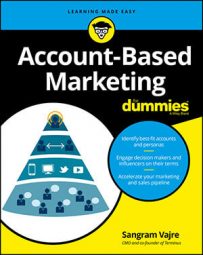A stakeholder can be any person in the company you are trying to sell. Stakeholders are individual contributors who usually don't have any direct reports. Individual contributors report to a team manager or department director. Examples of individual contributors are
- A marketing and/or sales coordinator
- An administrative assistant
- BDR/SDRs or your sales enablement team members
- Sales account executives
- Marketing managers who don't have direct reports
The number of influencers, stakeholders, or other individual contributors within an account depends on the size of the company you're targeting.
Consider these guidelines for identifying your stakeholders, according to company size:- SMB: If you're targeting small, early-stage companies, then you may only have one stakeholder. This stakeholder may also the decision-maker, especially when your sales process is transactional and doesn't require a contract. However, when you require a contract and you're targeting manager-level personas, then this manager within an SMB will have to present the contract to a higher-up (such as a director or executive). That person is the decision-maker with final approval.
- Mid-Market: You find more than one stakeholder. Even when you don't require a contract, expect to address multiple influencers in the purchase decision. The primary stakeholder is your champion to empower throughout the buying process. Your champion is the person who presents the contract or purchase decision to his or her power sponsor (the executive stakeholder, who could also be the decision-maker).
- Enterprise: You may have more than ten stakeholders, including a C-level executive who is the power sponsor and/or decision-maker. You'll have an estimate on the type of stakeholders based on your ICP. Because you've identified your product/service is ideal for enterprise companies, you will identify all the potential users. These users are individual influencers or contributors who can impact the purchase decision.
This is why it's important to identify all of your personas. By understanding the job titles, roles, and responsibilities of people involved in the purchase decision, you can identify all the potential contacts in the account.
In the Expand stage of ABM, you're expanding the target account with as much data as possible about the additional contacts in the account. It's about finding quality data to append your existing accounts. You want to find as much good data about the contacts in your target accounts; this will improve your marketing efforts by knowing who exactly you need to reach in each account.Your CRM allows you to roll up all of those contacts at the account level. You will need a plan to target all of these contacts. Using personas, you can identify potential stakeholders. If you sell a SaaS platform to B2B companies, these are personas who can be stakeholders:
- C-level executive: The Chief Marketing Officer (CMO) is the executive stakeholder who must justify the purchase to fellow executives in the C-suite, such as the Chief Executive Officer (CEO), Chief Financial Officer (CFO), Chief Operating Officer (COO), or Chief Revenue Officer (CRO, a title that's becoming more popular for the C-level executive in charge of sales and customer retention).
- Vice President (VP) or Executive Vice President (EVP): If you're targeting larger mid-market or enterprise companies, the VP is the person in charge of the department (or a team within a department); the VP reports to an executive officer. The VP is a stakeholder and power sponsor because she impacts the performance of the entire department within the organization. He or she can also be the decision-maker who will sign off on the purchase.
- Director or Senior Director: In SMB or mid-market companies, the Director of Marketing could be the head of marketing and report directly to the CEO. In a larger enterprise company, the director may oversee an individual unit and report to a VP or C-level executive.
- Manager: Many B2B technology companies recognize the manager-level titles as the ultimate users of their platform or service. These are the users who have been proven to be the most successful. The manager is your champion; the manager advocates to his or her director, VP, or C-level executive why the purchase is justified.
- Individual Contributor: Commonly called an administrator, coordinator, representative, or account executive, these individual contributors can be influencers or stakeholders in the buying process.


